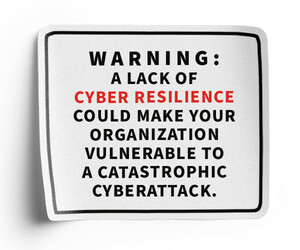EDR vs. MDR vs. XDR: How Do They Compare?
Lou Karu, vice president for U.S. SLED at Rubrik, puts it plainly: Agencies don’t have to “pick a team” so much as decide who will run detection and response, and how they’ll recover when something breaks.
“MDR is more of a managed third-party solution, where you’re engaged with a service provider to provide that solution,” Karu says — often the fastest way to round-the-clock coverage when staff is thin. “XDR is more of an in-house managed tool that security operations teams usually manage.”
EDR protects endpoints with behavioral detection, investigation and response. “We would hope that everyone’s got a modern EDR product at this point,” says Eric Marchewitz, a field solution architect for CDW Government, adding that there are still holdouts on legacy anti-virus who should “move off that as soon as possible.”
MDR adds a provider’s people and 24/7 operations on top of government tooling to triage, contain and remediate incidents for agencies. For governments, the case is compelling because “a lot of the breaches are occurring during off-hours,” Marchewitz says, and public schedules make agencies “particularly vulnerable” during holidays and shutdowns.
XDR is a unifying platform that correlates telemetry across domains to reduce false positives and speed response — either for government in-house IT team or for an MDR provider. Clark framed it as knowing the adversary’s “chess moves in advance” because you’ve seen the playbook across many environments.
READ MORE: Secure cloud solutions boost citizen services.
What’s the Right Mix for State and Local Governments?
Start with modern EDR, then layer MDR if an agency can’t staff 24/7 (or wants faster time to value) and expand toward XDR as the environment and needs mature, experts say.
Marchewitz recommends governments begin with a pragmatic assessment to identify control gaps: “We do have a low-cost assessment for state and local governments that really focuses on what we would call the CIS Top 18” — referring to the Center for Internet Security’s 18 Critical Security Controls — “That’s a good place to get started and to understand where your gaps are.”
He warns that agencies’ historical ability to “fall back to paper” is fading: “You’ve got body cams and all these additional pieces that you can’t necessarily just flip back to a paper, manual process anymore.” That means disruptions will have greater citizen impact in the coming years.
From the MDR provider side, Thomas emphasized that analysts strive to act surgically and with context to avoid unnecessary disruption: quarantine what’s malicious, kill only the relevant processes and confirm behavior against what’s normal for that user.
Clark underscored why this context matters: The combination of high-fidelity telemetry and finished intelligence lets analysts counter “early warning signs” before an intrusion becomes an outage.
For many states, the decision is about delivery model and mission scope.
“It depends on how the state is going to deliver Security as a Service,” Karu says. Central IT may need to support multiple agencies with different needs and workloads, which “could be a combination of both” MDR and XDR. “Having a partnership with both is important.”
Staffing realities often nudge buyers toward MDR. Asked whether workforce shortages are influencing choices, Karu doesn’t hesitate: “100%. I hear that a lot — getting skilled cybersecurity people on staff is very challenging.”
At the same time, “customers who are looking at an XDR solution might be doing that because it’s an extension of tools they already have. They don’t want to introduce yet another new thing because of budget constraints,” she says
LEARN: Here are some myths about AI security for state and local governments.
What Are State and Local Leaders Securing Right Now?
Karu sees three priorities that cut across MDR/XDR decisions — and land squarely in cyber resilience:
- Microsoft 365 resilience. “Microsoft 365 is much more of a critical application today” — powering procurement workflows, HR portals and internal sites. “When you cripple Microsoft 365, you cripple access to so many applications that are necessary now to deliver constituent services.” Agencies need protection and rapid recovery plans if ransomware hits.
- Identity resilience in the cloud. As apps move into Azure, access often hinges on Entra ID. “Bring down that access point, and you cripple an agency that thought they were delivering more robust services by bringing an application to the cloud,” Karu says. Extending protection and recovery to identity is now table stakes.
- Insider risk. Replication across regions isn’t enough. “We might have it replicated to another region, but we haven’t protected it should someone get admin control; perhaps it’s even an internal user,” Karu says. The test is whether you can recover and redeploy quickly if controls are abused.
That’s where Karu positions Rubrik: Whatever government IT admins choose for detection and response, Rubrik Security Cloud becomes the management plane for backup, cyber recovery and resilience, “regardless of whether your data is on-premises, in Software as a Service like Microsoft 365, or in the cloud.”
Agencies can start with the highest-risk area — Microsoft 365 protection, identity resilience or data center workloads — and still manage it all in one place.











